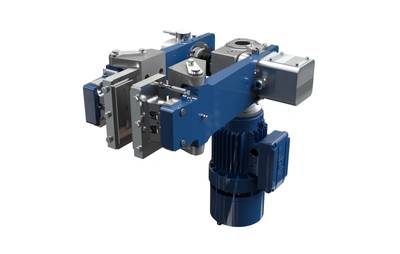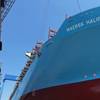Manufacturer of technologically advanced industrial and marine braking systems Dellner Brakes AB has launched what it is calling “the world’s first fully automated, electrical ‘Stop, Turn, Lock’ (eSTL) braking system” at September’s SMM 2016 international marine fair in Hamburg.
The Dellner eSTL system is compact and needs no additional piping, making it quick, easy and cost effective to install, the manufacturer said – especially where space is at a premium. It’s simple to use, hard wearing and easy to maintain, and it’s perfect for applications where a clean environment is paramount or for use in green shipping zones, Dellner added.
The system is available in a range of standard sizes, but it can also be customized for different applications. The unique, modular ‘Stopping, Turning, Locking’ system allows customers to choose one, two or all three functions to create a bespoke solution.
“Developed in response to an increasing global focus on environmental issues and a demand for smaller, flexible braking solutions, this groundbreaking electrical system is a world first, offering terrific power in a compact configuration for customers in offshore and onshore industries alike,” said Marcus Åberg, Dellner Brakes AB CEO.
“We have held initial discussions with our customers about this new electrical system, and we are delighted with the response so far. Our customers tell us that they value the flexibility of Dellner’s STL system, which allows them to pick and choose from the three components to suit their specific needs, and that eSTL will give them even more choice for small and mid-range applications.”
The Dellner eSTL system is fully automated, but it can also be operated from an optional remote hand held control, giving operators the freedom to inspect the complete system during maintenance and testing.
Here’s how it works:
- Stop: A disc brake system stops the shaft quickly in any position.
- Turn: After the brake has stopped the disc, an electric motor rotates the pinion so it aligns automatically and accurately with the gear wheel on the disc. A second mechanism then engages the pinion with the gear wheel and the electric motor allows the disc and connected shaft to be rotated at a variable speed to any exact position.
- Lock: An electrically operated mechanical locking system locks the brake disc and shaft safely and securely.
The continuous turning (cT) function means the shaft can be moved to any position precisely without the need for indexing, making maintenance a whole lot easier. The variable speed motor can also run continuously for hours, so checking and testing can take place over long periods.
Depending on the size of the system, stopping torque can be up to 900 kNm, turning torque up to 600 kNm and locking torque up to 1,650 kNm. Even Dellner’s small and mid-range eSTL systems can deliver stopping torque up to 300 kNm, turning torque up to 150 kNm and locking torque up to 700 kNm.
There is a patent pending on both the STL system and the eSTL brake itself.













